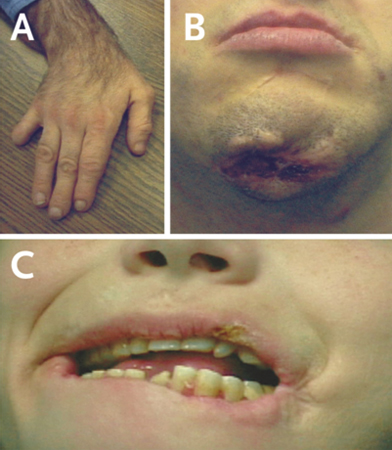Summary
Definition
History and exam
Key diagnostic factors
- age <12 months
- orange 'sand' crystals in nappy
- kidney stones
- pyramidal signs
- testicular atrophy
- male sex
- developmental delay
- involuntary movements
- generalised hypotonia
- self-injurious behaviour, usually at <5 years of age
- self-injurious behaviour focusing on the mouth and fingers
- cognitive disturbances
- delayed growth
- action dystonia
- positive family history
Diagnostic investigations
1st investigations to order
- serum uric acid level
- 24-hour urinary uric acid excretion
- hypoxanthine-guanine phosphoribosyltransferase (HPRT) gene analysis
- HPRT enzyme activity
Treatment algorithm
Contributors
Authors
Jasper E. Visser, MD, PhD
Neurologist
Department of Neurology
Radboud University Nijmegen Medical Center
Nijmegen
The Netherlands
Disclosures
JEV has received research grants from The Netherlands Organisation for Scientific Research (NWO), the Association LND Famiglie Italiane Onlus, and the Dutch Brain Foundation to conduct scientific research relevant to this topic.
H. A. Jinnah, MD, PhD
Professor
Departments of Neurology and Human Genetics
Emory University
Atlanta
GA
Disclosures
HAJ has served on the Scientific Advisory Boards for the Lesch-Nyhan Syndrome Children's Research Foundation in the US and for Lesch-Nyhan Action in France. He has received grant support from the NIH, the Lesch-Nyhan Syndrome Children's Research Foundation, and Psyadon Pharmaceuticals for research on Lesch-Nyhan disease.
Peer reviewers
Stephen G. Reich, MD
Professor
Department of Neurology
The University of Maryland School of Medicine
Baltimore
MD
Disclosures
SGR is co-author of a study referenced in this topic.
Pavel Seeman, MD, PhD
Associate Professor (Doc)
Head of the DNA Laboratory
Department of Child Neurology
Second School of Medicine
Charles University
Prague
and University Hospital Motol
Prague
Czech Republic
Disclosures
PS declares that he has no competing interests.
Use of this content is subject to our disclaimer
